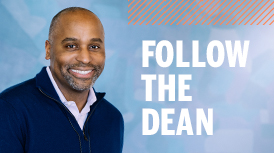Category: Features
The Creative Life
Actor Julianne Moore and creative director Gael Towey talk about the arts, storytelling, and where they find inspiration.
Edited by Corinne Steinbrenner; Photo by Matthew Hranek
Their Manhattan homes are mere blocks apart, and they’re each mothers of two children. They both attended BU’s College of Fine Arts, and they share interests in storytelling, interior design, and healthy cooking.
When Academy Award–nominated actor Julianne Moore (’83) and Gael Towey (’75), the longtime creative director at Martha Stewart Living Omnimedia (MSLO), first met at a CFA alumni dinner, it was clear they had much in common—not least, their status as highly accomplished and multitalented women.
Moore—known for her intelligence, versatility, and distinctive red hair—has appeared in more than 50 films, ranging from the 1998 cult favorite The Big Lebowski to 2010’s critically acclaimed The Kids Are All Right. Her acting has earned her a Daytime Emmy, six Golden Globe nominations, and four Oscar nominations. In addition, her interior design talents have been featured in The World of Interiors magazine, and her popular Freckleface Strawberry children’s book series has inspired a successful off-Broadway musical.
After serving as design director for House & Garden magazine, Towey joined Martha Stewart Living in 1990 as its founding art director. She designed the magazine’s inaugural issue, establishing its iconic and award-winning visual style, and then moved into progressively larger roles at MSLO, directing the design of everything from magazines and books to home furnishings and merchandise. This year she accepted a new title as chief integration and creative director, overseeing the creation of digital magazines and mobile applications for the multimillion-dollar Martha Stewart brand.
The College of Fine Arts recently brought Moore and Towey together again—this time for an exclusive Esprit interview. Moore took a break from a busy schedule promoting the HBO movie Game Change, in which she portrays former Alaska governor Sarah Palin, for a casual conversation with Towey about arts education, raising children to be creative, and living a life in the arts.
Towey: You were an acting student at Boston University in the 1980s. Are there things you call upon that you learned at BU that are still important to you in your everyday life as an actress?
Moore: Absolutely. I had a variety of sources to draw from while I was there. Different techniques and methods were taught each year, and the one thing that I came away with is that there is no one method to acting, to performing. You have to find it yourself. You spend four years with some teachers you really respond to, and then there are other teachers whose methods you don’t respond to. At the end of the four years, you realize what you like and what works for you. So, absolutely, there are things that became fundamental to my acting.
Towey: Yes, it gave you a foundation. I was thinking about how, especially having children in college myself, so much of your education depends on what you bring to it as a student. I don’t know if all students realize the responsibility they carry when they go to university and how important it is for them to make choices and open themselves up to possibility.
Moore: I don’t think they do. I was at BU not long ago and spoke to some acting students. I talked to them about what was expected of them when they got out of school, but I think they should require those same things of themselves while they’re in school. I try to say it to my children even now. When my daughter says, ‘I don’t want to do this homework,’ I tell her, ‘Then don’t do it. Don’t do it and go in tomorrow and tell your teacher that you didn’t want to do it and didn’t finish it.’ Of course that makes her very upset, but I’m just trying to ask her to take responsibility. By the time you’re in college, you need to say, ‘I’m going to take responsibility for what I want to do and how I’m going to accomplish it.’
Towey: I think that’s true of visual artists, too. You have to open yourself up to take risks. Being willing to fail is important.
“It’s never a sure thing. As a musician, as a visual artist, as an actor—you have to be able to know you’re going to fail, and fail a lot.”
Moore: And you have to be brave about it. I talked to my daughter about this the other day, too, because she and her friends were all trying out for parts in a play. And one little girl said, ‘Well, you can’t get your hopes up because you might be disappointed.’ And I said, ‘No, you can get your hopes up. You should get your hopes up. You just have to be brave, because you might not get the part, and that’s going to be really disappointing, and it’s going to feel terrible. But you have to be brave enough to do it again, to try again.’ I think that’s what it’s about in the arts in general, because it’s never a sure thing. As a musician, as a visual artist, as an actor—you have to be able to know you’re going to fail, and fail a lot.
Towey: And it’s hard to find that inner resource. I think it actually takes a lot of practice. With your father in the military, you were brought up all over the world. You were in a new school almost every single year. Obviously, that had a big impact on how you approach life. I can imagine you felt as though you had to test those inner resources every time you walked into a new school and tried to make new friends.
Moore: I did, and the thing I learned is that behavior is not character. Behavior is mutable. I think that when you stay in the same place, you believe that behavior is a static thing, that it’s part of who you are. It’s not. It changes from place to place. What’s universal is a different sort of thing—it’s deeper. Universal truth—something that everybody shares regardless of language, culture, behavior—I’m always looking for that within a narrative.
Towey: Storytelling is such an important part of our lives. In the magazine business, that’s what we do, and that’s obviously what you’re doing, too.
Moore: And you’re doing it visually. That’s something that I tell acting students: look at the frame; don’t just hear the words. If someone has chosen to frame something a certain way and placed actors within it, there’s a narrative there. Or, there’s a narrative within a collection of objects in a room and the way they’re placed.
Towey: You’re a very visual person, so I wanted to ask you about the movie sets you’ve worked on. What are some of your favorite sets?
Moore: A Single Man comes to mind.
Towey: The house that your character, Charley, lived in was so 1960s, sophisticated.
Moore: The style was very Hollywood Regency, yes. And George, played by Colin Firth, lived in a really modern, tiny Lautner house that’s actually in Pasadena. It’s always great to be on a set where someone has taken a lot of care in the storytelling and put real thought into who your character is and what they would have around them and what would be meaningful to them. That’s just fun. It fills in your story.
Towey: I want to segue to the subject of raising kids. Giving my children the ability to learn how to be creative is a huge part of my life, and it’s made my life with my children and my husband so fulfilling. My husband is a designer, and we share a lot. You and your husband are both in the film business, and you obviously have a lot in common. What do you do to make sure that your children have that creative life?
Moore: I feel that exposure is everything. I made both of my kids take piano when they were five. My son took piano for a year, and then he wanted to take guitar. I said, ‘You can’t quit piano yet. At the end of the year, you can decide.’ Well he decided guitar, and he stuck with it. And now he’s a teen, and he’s been playing guitar all these years. My daughter struggled through piano, struggled through guitar; that’s not her thing. So with each child, you’re going to learn what sticks. In terms of visual arts, you try to demystify it by talking to them and bringing them to museums.
Towey: And it’s all here in New York. It’s the best place in the world to bring up children—what they’re exposed to just on the street is so inspiring.
Moore: Yes, you can see street artists and say, ‘Look at that. See what this person has done. What does it look like? How would you draw it?’ Even with the books that I write, when I talk to little kids about them, I tell them, ‘I wrote the words. Someone else did the pictures. I’m sure you make books in school. You can make them by yourself and put the words and pictures together, or you can get a partner like I have.’ You try to demystify it so that the book is not just something that’s created somewhere out there. It’s something they can understand.

Freckleface Strawberry series covers
Towey: I wanted to ask you about your writing. You’ve been able to intermingle your creative life as an actress with that of being a writer at the same time.
Moore: Well, I’m not a novelist!
Towey: I know, but you’re telling stories. And did the lessons in the stories come out of your own personal experiences?
Moore: I think for most children’s book writers, it’s all autobiography. I always tell little kids that everything they say about my character’s freckles in Freckleface Strawberry, people said to me as a kid. Freckleface Strawberry and the Dodgeball Bully is really about my experience hating dodgeball. Best Friends Forever, which is the third book, is a metaphor for marriage. So, yes, they’re all things I wanted to talk about, but they’re written from a child’s point of view.
Towey: How did you find the courage to try your hand at writing, to branch out from acting and try something new?
Moore: Well, it doesn’t hurt to try. That’s what my mother always said. You might as well try. The worst thing that can happen is that you fail. And it’s painful, and it will hurt your feelings—and my feelings have been hurt many, many times—but what else are you going to do?
Towey: Exactly. And for young artists who are just beginning their careers, would you recommend they concentrate on a single craft until they’re more experienced, or should they branch out from the beginning?
Moore: This is interesting because when I was at BU last year, a student asked me this. He said, ‘What should I do? Should I diversify?’ and I said, ‘We’re talking about your life. When you get out of school, you’re thinking about career, career, career. But take a step outside that and realize that your career is just one part of your life.’ Diversification is not about getting ahead; it’s about what you enjoy. So, by all means, do what you want to do. There’s no right or wrong.
“I think a creative life is a whole life. In a creative life you never stop working. You’re always looking. You’re always learning.”
Towey: I agree. It’s about passion. If you let your passion lead you, you’ll discover the wonderful things you can do. I think a creative life is a whole life. In a creative life you never stop working. You’re always looking. You’re always learning. Lifelong learning is one of the most important things you can do for yourself and the people around you.
Moore: I think that’s absolutely true.
Towey: And you have to learn so much. I was reading about your recent Sarah Palin movie and about the technical part of learning a character. It’s similar with art: craftsmanship is tremendously important. You begin with a creative inspiration, but it’s the time you spend on the execution—your technical craftsmanship—that enables you to fulfill the original vision.
Moore: I’m glad you brought that up. That’s something people don’t always talk about—about the things you have to do technically. It gives you a framework. If you have an idea, an inspiration, it can pull you around all over the place. Until you have a framework for it, it goes nowhere. That’s where your technique comes in: it allows you to take the idea and to shape it and present it. That framework is what school is all about. It’s what I learned from my teachers—different techniques and ways to structure things. You don’t exist as a creative person without that.
Keyword: Violence
What role does violence play in human society? What role can the arts play in the search for an answer?
By Corinne Steinbrenner; Photo by Graham Edmondson (’13)
Jack leads his band of war-painted hunters in a rhythmic dance. As more boys join the circle, their stomping and chanting become louder, more fervent. “Kill the beast. Cut his throat. Spill his blood. Kill the beast. Cut his throat. Spill his blood.”
We’re midway through act two of the School of Theatre’s adaptation of William Golding’s 1954 novel, Lord of the Flies, the tale of a group of British schoolboys who devolve into a tribe of savages after being marooned on a lonely island. The mood in the small black-box theatre is tense; even audience members who read Lord of the Flies in high school and know how the scene plays out are holding their breath.
By the time the boys disperse, they have, indeed, killed—not the unknown beast that haunts their dreams, but Simon, one of their own.
“The play really dropped in for us, as a group, when we got to the staging of Simon’s death,” says Jake McLean (’12), who acted the part of Jack, the ringleader. “We all stepped out of that first day thinking, ‘Wow. That’s scary.’ We felt what it would be like to participate in such an act.”
After being cast as Jack, McLean began talking with his professors about techniques for cooling down, “shaking it off,” at the end of a rehearsal or performance. “If you’re doing a comedy and it brings you joy, you want to carry that into your life,” he says. “I don’t want to carry around murderous, angry, twelve-year-old.”
Playing Jack, who transforms from head choirboy to head hunter, was “quite a journey,” says McLean, “and I began to realize that a lot of his transformation comes out of fear—fear of disapproval and fear of the unknown. One thing that we discussed a lot with Jack is that whenever there’s a problem, he doesn’t think logically how to solve it. He just goes, ‘Okay, we’re going to go out and kill something now.’ That’s how he copes with things, with violence.”
Lord of the Flies’ exploration of violence is the reason it was chosen as part of the School of Theatre’s 2011–2012 lineup. This academic year is the inaugural year of the College of Fine Arts’ “keyword initiative,” which encourages CFA’s three schools to center their annual programming on a specific word. This year’s keyword: violence.
Catalyst for Conversation
Dean Benjamín Juárez hopes that CFA’s annual keyword efforts will strengthen ties among CFA’s three schools and spark conversations across campus. “We are trying to build a two-way dialogue with schools and colleges throughout BU, inviting our community to feel, think, and act around themes that are relevant to all of us,” he says, explaining that CFA is including experts from throughout BU in roundtables and lectures associated with CFA performances and exhibitions.
It’s an idea that has succeeded on other U.S. campuses. Since 2006, the University of Southern California has sponsored a university-wide arts initiative called Visions and Voices that explores the university’s core values (“search for truth,” “respect for diversity,” etc.) through performances, film screenings, lectures, and workshops. In 2007, the University of North Carolina at Chapel Hill launched Carolina Creative Campus, a program that uses the arts to catalyze campus discussion around a specific topic. In its first year, UNC chose the theme “Criminal/Justice: The Death Penalty.”
Reed Colver, who helped organize the UNC program, says that first theme turned out to be far more relevant to UNC than anyone expected. Partway through the academic year—just before a planned performance of Dead Man Walking, a play about a convicted murderer awaiting execution—UNC’s student body president was murdered. Because of the sensitivity of its subject, Creative Campus organizers considered cancelling the play, but they ultimately decided, says Colver, “We need to continue to provide the space that we’ve been providing for dialogue about these issues.” The structured discussions held in conjunction with the performances, she says, “gave students, faculty, and staff a chance to talk through and process, within a fairly safe environment, what was happening in our day-to-day lives.” Creative Campus became a perfect example of art’s power to build community and to help explore and explain the human condition.
Choosing Violence
The idea of using violence as CFA’s first keyword came during a visit to the gym last winter. “I was on the elliptical machine at the Y,” says School of Theatre Director Jim Petosa, “and the news reports about the shooting of Representative Gabby Giffords came on the air. It was such a stunning moment.”
The extensive news coverage of Giffords’s attempted assassination prompted Petosa to choose violence as a theme for his School’s coming year of theatrical programming. When he shared the idea with Juárez, the dean was so enthusiastic that he proposed extending the theme across CFA. “And then it became this notion of a keyword, which is different from a theme,” says Petosa. “A keyword actually suggests a Google way of thinking—cloud-based thinking—which is a much more generous way of examining the potency of a given word.”
Petosa and colleagues chose a range of plays for the School of Theatre’s exploration of violence—from Monster (an adaptation of Mary Shelley’s Frankenstein) to Shakespeare’s bloody revenge story Titus Andronicus. Fittingly, considering the event that inspired this examination of violence, the School is staging two plays that deal with political assassinations: Execution of Justice, the story of Dan White, who assassinated San Francisco’s openly gay city supervisor, Harvey Milk, and Assassins, a Stephen Sondheim musical that explores U.S. history through the eyes of people who either assassinated or attempted to assassinate U.S. presidents.
For its keyword programming, the School of Visual Arts invited controversial painter Enrique Chagoya to give November’s Contemporary Perspectives Lecture (see sidebar). While on campus, Chagoya made a series of small prints for the School inspired by Francisco Goya’s famous series, The Disasters of War. Visual arts professors leading junior and senior seminars are also incorporating the theme of violence into their course discussions this year.
Because opera so often deals with the extremes of human behavior, Opera Institute Director Sharon Daniels had no trouble selecting violence-themed operas to include in her 2011–2012 season, including Francis Poulenc’s Dialogues of the Carmelites, the story of 13 nuns sent to the guillotine during the French Revolution. BU Symphony Orchestra Conductor David Hoose also found he had plenty of material to choose from. “Unfortunately, violence is so omnipresent in our culture and our world,” he says, “that it’s something composers have responded to through a lot of music history.”
Hoose says that applying a keyword or other unifying concept to a season of programming is a wonderful idea that more arts organizations should consider. It’s particularly tricky, however, in a teaching environment. “The music that the orchestra plays or the chorus sings, that’s their curriculum,” he says, so while a keyword must be provocative enough to ignite conversation, it must also be broad enough to allow faculty to choose music, plays, and exhibits that will meet the educational needs of their students.
With these parameters in mind, CFA students and faculty members are already deep in discussion with professors and administrators from across BU, working to choose a fitting keyword for next year’s explorations.
Your Brand
To be a successful working artist, take a few pages from the marketer’s playbook.
By Patrick L. Kennedy
To tweet or not to tweet? If you make your living as an independent painter, sculptor, graphic designer, musician, actor, or director, the answer is, to tweet. As well as to blog, email, and Facebook—and most important, to do all of these strategically.
Artists today should know how to market themselves, says CFA Dean Benjamín Juárez, who plans to make entrepreneurial skills part of the College’s curriculum going forward.
Nowadays, the arts have lots of competition for people’s time and attention, Juárez explains. “So an artist needs to be not only an excellent, relevant artist, she also needs to be an advocate for her profession, for her art, and for her work. This means that she will have to acquire on top of her artistic skills some other tools that will allow her to be a good presenter, to express herself in writing and orally, to reach out to her community, to build new ways in which to experience the arts, to make use of technology and social media.”
A big part of that, says Juárez, is knowing how to brand yourself.
“Personal branding is a state of mind,” Gary Bergmann tells audiences at his lectures on the topic. Bergmann, a personal branding consultant and a career counselor at BU’s School of Management, says his advice applies to artists as much as, if not more than, it does to business professionals. Careful branding, he says, provides artists swifter recognition and the potential for a more devoted and appreciative audience. “The sooner you realize you are a brand and you need to integrate and unify all the elements of your communication, the better.”
You don’t have to be Martha Stewart or Dolly Parton to practice “personal branding.” The term is defined by Dan Schawbel, a guru Bergmann cites often, as simply “how we market ourselves to others.”
Study after study has shown that “a strong brand gets more revenue through higher awareness,” says another School of Management branding expert, Associate Professor Susan Fournier. And self-employed artists know that they have to consider revenue if they want to keep making art.
Not that an independent practitioner should try to maximize his or her brand. “A coffee company wants its brand to be the biggest,” says Fournier. “That might not be the best goal for an artist.”
Personal branding in the arts is actually about staying true to one’s vision. The point is to clearly define that vision, and to keep in mind the audience, no matter the size, that appreciates that vision.
“It’s not how well you are known,” says Bergmann. “It’s what you are known for.” That’s the first of two major principles of branding as Bergmann sees it. “It’s writing your own mission statement. What are your key attributes?” List them.
For example, jewelry designer Kirsten Goede (’90) says, “I am known for hand-crafted Swarovski crystal—and an abundance of it—and a lot of style. Bright, colorful, and feminine” are the words associated with her line, Objets d’Envy.
Bergmann’s second and closely related principle is: “It’s not about you; it’s about who your ‘client’ is.”
In Goede’s case, that means, “A woman who’s between 28 and 52, probably an educated professional—but really somebody who’s looking for something a little bit different and is not afraid to go a little bit bolder with her jewelry,” she says. (Gayle King, best friend of Oprah Winfrey and editor-at-large of O, The Oprah Magazine, wore an Objets bracelet to the 2011 Academy Awards.) “There’s a ton of jewelry designers out there, but there’s a customer for everybody.”
And while a large company wants its product to “resonate within the culture,” says Fournier, artists need only focus on a segment of that culture. “There has to be a group that’s drooling for what it is that you do.”
Once you’ve defined your attributes and your audience or clientele, you’re ready to promote your brand online and off. Web 2.0 and social media allow small entrepreneurs to market themselves as never before. (Think of all the crafts sold on Etsy.)
This doesn’t mean it’s time to lock yourself indoors and rely solely on the Internet to build your brand. But with cheap and speedy electronic communication, an artist can not only spread the word about upcoming exhibits or shows, but also develop a buzz and a sense of intimacy with fans.
Goede perfectly blends shoe leather with savvy e-marketing. The women who read her email newsletter and buy her jewelry enjoy doing business with a small entrepreneur, she says. “It’s sort of, ‘This is my friend and my jewelry designer.’” (Goede says for that reason she finds email to be a more intimate venue than Facebook or Twitter, although she maintains pages on those sites as well.) Meanwhile, she goes out to visit office groups who invite her for lunchtime show-and-tells, and she holds fun “coffee-and-sparkle dates,” in which she shows small groups her latest work.
As you juggle on- and offline marketing efforts, the key is to remember “the three C’s of personal branding,” as Bergmann calls them: “Clarity, consistency, and constancy. You need to be very clear about who you are and what you do; the message has got to be the same over and over again; and you’ve got to be out there all the time—you can’t be hiding in a corner.”
The advantage of being a one-person promotional machine is that you can make your communications consistent yourself, without having the pieces separately approved by a committee. Using her photography skills and her CFA graphic design training, “I control all the messaging,” says Goede.
“Everything has the same look and feel and voice, and it’s got to be authentic, which is not so hard to do—it’s really just speaking from the heart. Jewelry design is one of the most important things in my life, so I can talk about it and spread the word pretty easily.”
Many of us are wary of putting ourselves out there too much, of seeing our typos or ill-advised posts spread before we can delete them. And indeed, in some ways, you face greater risks branding yourself than if you were branding a coffee or a car, Fournier acknowledges. “Because the brand is a human, and humans make mistakes.”
But to a large extent, you have it all over a faceless corporation. “A strong narrative is the biggest secret of branding,” says Fournier. “All good brands have good stories. And good stories that are resonant and provocative have a main character. Well, the personal brand has that built in already. Artists, because they’re corporeal, can make their stories come alive. It takes a lot more work to do that for a brand of coffee.”

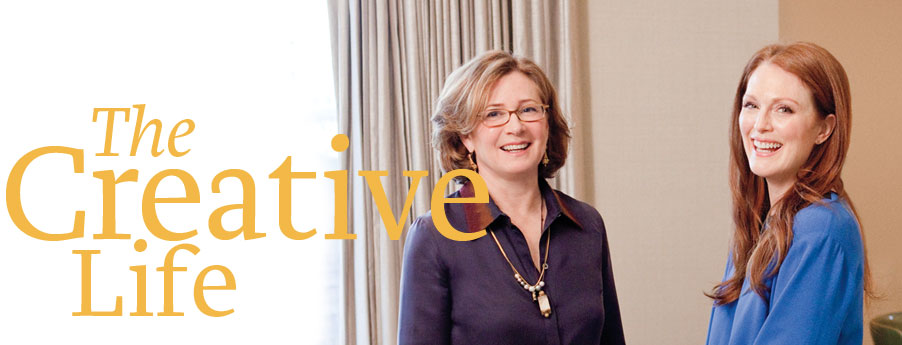

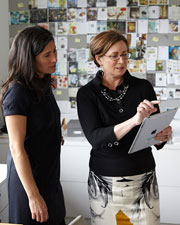
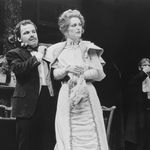

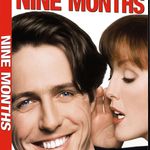





 “Twitter is an incredibly powerful way to get your music or art ideas out there. It is important to be creative on Twitter. Say things that provoke, are funny, or are informative—anything that would genuinely interest a varied group of individuals. This can really help grow your group of followers as well as get your name out there. However, I think one should be careful when posting bland info-statements and the same old thing. This can do more harm than good.”
“Twitter is an incredibly powerful way to get your music or art ideas out there. It is important to be creative on Twitter. Say things that provoke, are funny, or are informative—anything that would genuinely interest a varied group of individuals. This can really help grow your group of followers as well as get your name out there. However, I think one should be careful when posting bland info-statements and the same old thing. This can do more harm than good.” “I use Facebook to promote shows, and also any reviews of my work or my friends’. I have found it a wonderful way to stay in touch with an art-conscious community beyond my own physical limitations, having spent a lot of time in other countries.”
“I use Facebook to promote shows, and also any reviews of my work or my friends’. I have found it a wonderful way to stay in touch with an art-conscious community beyond my own physical limitations, having spent a lot of time in other countries.” “Social media is great, but really get those email addresses from people. Exchanging emails—it’s a much tighter relationship. Get those addresses any way you can. For example, I don’t give out my business card so much as get others. You don’t know whether someone will follow up if you just hand them your card, but once you have their contact info, you control where the relationship is going. I pay 80 bucks a month for an email newsletter service—that forces me to get one out every month. I get sales inquiries every time.”
“Social media is great, but really get those email addresses from people. Exchanging emails—it’s a much tighter relationship. Get those addresses any way you can. For example, I don’t give out my business card so much as get others. You don’t know whether someone will follow up if you just hand them your card, but once you have their contact info, you control where the relationship is going. I pay 80 bucks a month for an email newsletter service—that forces me to get one out every month. I get sales inquiries every time.”
